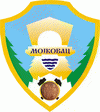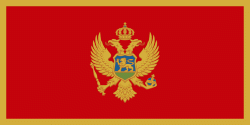Mojkovac (Montenegrin Cyrillic: Мојковац, ) is a town in northern Montenegro. It has a population of 3,590 (2011 census). Mojkovac is the centre of Mojkovac Municipality, which has a population of 8,622.
The municipality of Mojkovac covers an area of 367 km2 and according to the number of inhabitants (10 015 / 2003g) belongs among the smaller municipalities in Montenegro. The city resort is located at an altitude of 853 m. Its mathematical position is determined by geographical coordinates: the northernmost point is located at 43005 'SGŠ, which is at the same time the lowest point of the municipality, located on the banks of the Tara River; the southernmost point is the Đevojačka glava on Sinjajevina at 42054 'SGŠ; the most eastern point is the Mokro Polje in Bjelasica on the 19040's IGD and the westernmost point is Pećarac peak at Sinjajevina on 19021 IGD. The territory of this municipality borders with municipalities: Kolašin, Šavnik, Žabljak, Bijelo Polje and Berane. The Municipality of Mojkovac encompasses the extended Tara River valley, which divides the area of the municipality into approximately two equal parts. The Tara valley is a composite character: the gorges, basins and parts of the canyon are scattered. From the gorge, which is located north of the mouth of the Štitarička River, there is a Mojkovac valley, which passes from the Feratovo Polje, through Podbišće, Donje Selo and Mojkovac to the ravine of the Upper and Lower Polje. The total length of the basin is 9 km, and the width is 2.5 km. In the canyon part of Tara, which belongs to the municipality of Mojkovac, larger extensions are around the mouth of Bistrica, Ravnik (3.3 x) and around Gornja Dobrilovina and black black pine forest in Crni Podim. Four kilometers north of Mojkovac is the passage of the Strait (1,007 m), through which it enters the expanded and well populated Leposnica Valley, the tributaries of Lim. In Mojkovac, a moderate continental climate predominates, which is quite similar to Kolašin's climate. A hydrometeorological station has recently been set up in Mojkovac, so the future monitoring of climatic data will be more precise. The shield average 1,889 mm of rainfall annually, Mojkovac 1,664 mm, and Lower Dobrilovina 1,121 mm. The number of snow days per year is around 120, and the height of the snow cover reaches 150 cm, and in the mountains it is much more.


















